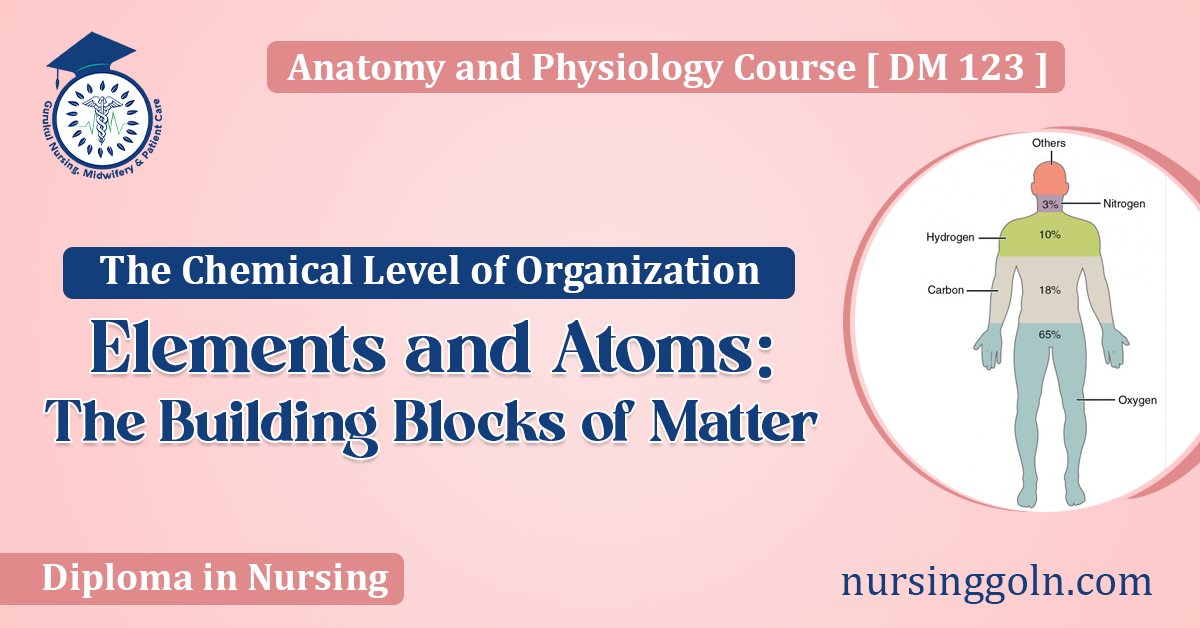In the vast expanse of the universe, from the grand galaxies that stretch across light years to the minutest particles visible only under powerful microscopes, there is an underlying structure that defines and shapes everything we know: matter. Matter, in its various forms, makes up the planets, stars, living organisms, and even the air we breathe. The foundation of this matter lies in its tiniest units—atoms—and the elements they constitute.
Elements and Atoms: The Building Blocks of Matter

The Concept of Matter
Matter is any substance that has mass and takes up space. It can be solid, liquid, or gas. Whether it’s the solid structure of a rock, the liquid flow of water, or the gaseous expanse of our atmosphere, everything is made up of matter. The properties and behavior of matter are studied in a branch of science called physics.
To understand the nature of matter, it’s important to dive deep into its smallest components, and that’s where atoms and elements come into the picture.

Atoms: The Fundamental Particles
The idea that all matter is composed of elementary particles dates back to ancient civilizations. Greek philosophers, for instance, postulated the presence of ‘atomos’ or indivisible units that make up all materials. It took millennia for this theory to evolve into our current understanding of atoms.
Structure of an Atom
Every atom is composed of a nucleus and electrons that orbit this nucleus. The nucleus itself contains protons and neutrons. Here’s a breakdown:
- Protons: These are positively charged particles present in the nucleus. The number of protons in an atom determines its atomic number and, consequently, the type of element it represents.
- Neutrons: Neutrons are neutral particles, meaning they have no charge. They reside alongside protons in the nucleus. The sum of protons and neutrons in an atom gives its atomic mass.
- Electrons: Electrons are negatively charged particles that orbit the nucleus in specific paths or shells. The number of electrons in a neutral atom equals the number of protons.
Elements: Unique Combinations of Protons, Neutrons, and Electrons
Each element is defined by a unique number of protons in its nucleus, known as its atomic number. For instance, hydrogen has one proton, so its atomic number is 1, while helium has two, making its atomic number 2. Every element has its symbol, like “H” for hydrogen and “He” for helium.
There are currently 118 known elements, which are tabulated in the Periodic Table. These elements range from the lightest, hydrogen, to the recently discovered and synthesized super-heavy elements.
Chemical Bonds: The Glue of Atoms
Atoms don’t usually exist in isolation. They tend to bond with other atoms to form molecules or compounds. The main driving force behind these bonds is the electron. Electrons occupy specific regions or shells around the nucleus. For an atom to be stable, its outermost shell (valence shell) needs to be full. To achieve this, atoms share, donate, or accept electrons from other atoms.
There are three primary types of chemical bonds:
- Ionic Bonds: Formed when one atom donates an electron (or electrons) to another. The resulting charged atoms, or ions, are then attracted to each other. Sodium chloride (table salt) is an example of an ionic compound.
- Covalent Bonds: Here, atoms share electrons. This type of bond is common in organic molecules. Water (H₂O) and methane (CH₄) are examples of covalent compounds.
- Metallic Bonds: Found in metals, where electrons are free to move through a lattice of metal ions, providing them with unique properties like conductivity.
The Periodic Table: Organizing the Elements
One of the crowning achievements of chemical science is the Periodic Table. It organizes elements based on increasing atomic numbers and recurring properties. The table is divided into rows called periods and columns known as groups or families.
The placement of elements in the Periodic Table provides a wealth of information about their properties. For example:
- Elements in the same group have similar chemical properties because they have the same number of electrons in their outermost shell.
- As you move from left to right in a period, the elements become less metallic and more non-metallic.
- Transition metals occupy the middle block of the table and possess properties of both metals and non-metals.
Over time, the Periodic Table has expanded as new elements have been discovered. Some of these new additions are synthetic, created in labs under extreme conditions.

Applications of Atoms and Elements in Daily Life
The knowledge of atoms and elements isn’t just a theoretical pursuit. It has profound implications in our daily lives.
- Medicine: Understanding chemical bonds helps in drug design, allowing for targeted therapies in various diseases.
- Electronics: Semiconductors, at the heart of our electronic devices, rely on the principles of atomic structure and bonding.
- Energy: From harnessing nuclear energy by splitting atoms to creating solar panels that utilize the photovoltaic effect, the applications of atomic theory in energy are vast.
- Materials Science: New materials with enhanced properties, like superconductors or graphene, are developed based on the principles of atomic and molecular bonding.
The Expanding Horizon: Beyond the Atom
While atoms are the fundamental units of matter, the journey of discovery doesn’t end there. Protons, neutrons, and electrons were once thought to be elementary particles. However, with the advent of particle accelerators and advanced experiments, even these particles are found to be made of smaller entities known as quarks and leptons.
The quest to understand the nature of reality, from the vastness of the universe to the tiniest particles, continues. As we delve deeper into the atomic world, we come closer to understanding the very fabric of existence.

Atoms and elements form the bedrock of our understanding of matter. They shape the universe, from the air we breathe to the distant stars that light up the night sky. By studying them, we don’t just unravel the mysteries of the cosmos, but we also forge a path for innovations that have a profound impact on our daily lives. As the legendary physicist Richard Feynman once said, “Everything that living things do can be understood in terms of the jigglings and wigglings of atoms.” It’s a testament to the central role atoms play in the tapestry of existence.
See more:
